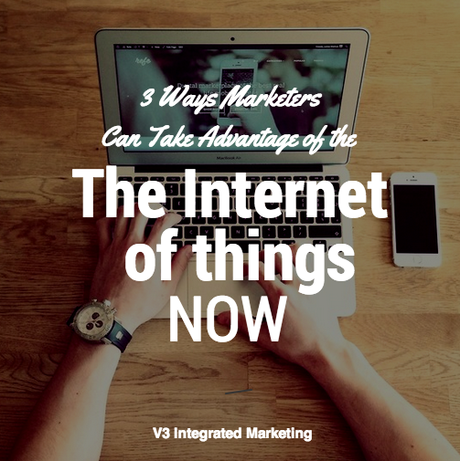 You can hardly pull up a news outlet today without reading about how big the Internet of Things will be. And it will be big: IDC estimates the market to be 212 billion installed devices, accounting for a market size of $8.9 trillion by 2020. That’s pretty big.
You can hardly pull up a news outlet today without reading about how big the Internet of Things will be. And it will be big: IDC estimates the market to be 212 billion installed devices, accounting for a market size of $8.9 trillion by 2020. That’s pretty big.
If you aren’t familiar with the Internet of Things (also known as IoT, machine-to-machine (M2M) communications or simply, connected devices), essentially, it’s the enabling of devices to communicate with each other and to transmit data in order to function more intelligently and provide convenience. It might sound far out, but you’ve already seen it in action, though you may not have realized it’s part of the Internet of Things: ATMs, vending machines, home security systems, package tracking and Kindle e-readers are all connected devices.
Other use cases include things like remote patient monitoring so a caregiver doesn’t have to be on-site with a patient at all hours (nor does a patient have to be hospitalized to be monitored); smart thermostats like Google’s Nest; smart meters like parking meters or utility meters that can be monitored remotely; connected cars like Audi connect® or OnStar®; building automation where things like lights and temperature can be controlled remotely, and the list goes on. This is just an inkling of what will be possible with IoT.
With such high growth expectations and use cases for IoT popping up nearly daily, marketers can hardly ignore the opportunities to connect with key audiences in new ways. Predictive marketing, contextual marketing and real-time marketing will be more prevalent than ever as connected devices offer ways to give its users more value.
Marketing and business models will need to change. For one, integrated marketing platforms should be able tell us which device to target and with what type of message for a user. Vikrant Gandhi, principal analyst at Frost & Sullivan told me, “What used to be inputs (marketers telling the platform which devices to target) should ideally become outputs now (platform telling marketers which devices to target).”
But for all the talk about what will be possible through IoT and how marketing will need to adapt, it’s important to see that there are marketing opportunities offered by connected devices today.
Let’s look at just three ways marketers can take advantage of the Internet of Things now:
1. Digital Signage. Internet-connected signs are typically connected via Ethernet or Wi-Fi connection. They can stream media or display content like video, images and information. Some signs allow for audience interactivity via SMS or Bluetooth, like enabling people to post messages or images to the sign via Twitter or Flickr.
Because they can be updated in real time and remotely, intelligent signs are used in all types of settings including retail, transportation, event and healthcare settings and so much more.
It’s easy to see how Internet-connected signs can improve customer experience, build brands and influence customer behavior.
Businesses that feature digital signage as a way to increase customer engagement via social media or to draw people into retail locations like the Lego store for an interactive experience are particularly interesting. Pepsi even launched an interactive vending machine for World Cup soccer, which adds another element of fun.
2. Point of Sale. In particular, offering mobile payments can be a way to provide an added level of convenience and an overall better customer experience.
There are many types of mobile payments, though, and deciding which one is best for your business may take a little research.
Apple’s iBeacon is one example, and it uses Bluetooth Low Energy (BLE). Let’s say Nordstrom has a beacon in its store. If a consumer enables location services on her Nordstrom mobile phone app, Nordstrom can transmit coupons and incentives to come into the store when the consumer enters the vicinity of the beacon. That beacon can also accept mobile payments.
Another use case of beacons are mapping as an alternative to GPS – perfect for large, indoor areas (think casinos, large department stores or tradeshows) where cell signals don’t often work well. An example may be helping someone locate a specific in-store item or an exhibit booth or kiosk.
NFC (Near Field Communication), a wireless technology that transmits data between devices, usually by touching the devices together or in very close proximity, is typically used in apps like Google Wallet. Although it is sometimes considered a smoother consumer experience, remember that only a subset of smartphones have NFC chipsets (iPhones do not)—and it can be more expensive on the merchant side.
Closed loop mobile payments, like the Starbucks app, basically allow a company to build its own payments platform.
And there are many more mobile payments options. But, a word of caution from analysis firm Frost & Sullivan: simply extending the plastic card issuance model into mobile is not likely to be a successful strategy. It is critical for mobile wallet platforms to be ‘open’ and integrate data from other platforms, such as third-party marketing systems, in order to deliver multiple value-added services (VAS) to consumers. Brands that deliver omni-channel banking, payments and marketing are likely to experience higher adoption of their services.
3. Wearable Technology. Although still in its infancy, wearable computing devices are becoming more widely available using wireless technologies like Bluetooth, Near Field Communication (NFC) and Wi-Fi. IDC predicts 19 million wearable tech devices will ship in 2014 and will jump to 111.9 million by 2018.
Google announced this week that anyone in the U.S. now can buy Glass smart glasses. Previously, the company only made Glass available to “explorers,” or people who signed up via a pilot program.
Now that Glass is available to anyone in the U.S. (though adoption of Glass will likely remain small for some time yet), and other wearable tech devices are becoming available – namely smart watches like Samsung Galaxy Gear™ and a highly anticipated (yet still only rumored) Apple iWatch– there is new opportunity for marketers to reach early adopters of wearable tech.
But marketers need a good understanding for which wearables are most likely to be used by their customers and then how that wearable device works.
Samsung Galaxy Gear works using Bluetooth, so consumers need to have their Samsung mobile phone nearby (like in their pocket). It’s currently capable of receiving text messages and emails, including coupons.
Glass works using Android-powered apps including Google Now that offer contextual content like coupons for nearby restaurants, events, hotels and more. Since Google’s Glass Explorer program, advertisers have been experimenting with other apps for Glass, including augmented reality apps that can deliver more content in the context of real-world interactions.
If iWatch is really a thing, it probably would run using its own module, similar to what’s used in smartphones, and be capable of running iOS-powered apps.
With data collected from early adopters of wearable tech, brands can better understand where and when people might take action on a trigger—a sushi restaurant coupon delivered when entering the vicinity of said sushi restaurant, for example.
And that’s really the key to success (and also the challenge) for marketers: providing value and convenience to people wearing computers. If marketing to people via wearable technologies isn’t valuable, then that’s money down the drain. Also, marketers need to remember that wearable devices are quite small. Design and experience are critical.
That’s really the point of the Internet of Things: to provide more convenience, value and a better experience that we couldn’t get if we didn’t connect devices.
Marketers and brands should understand that the way we interact with and provide that experience to audiences will change drastically in the next few years as IoT affords new opportunities. Watch the IoT space quite closely because it will impact your brand. And there will be many more important considerations to make, like device fragmentation and consumer privacy.
Though many marketing opportunities via the Internet of Things are still quite young, remember that sometimes the brands that are first to market or first to experiment with new channels (if they align well with a larger marketing strategy) can come out on top and win over competitors.
If you have tried using any of these or other Internet of Things applications in your marketing strategy, I’d love to hear!

Jill Van Nostran is a mobile tech marketing consultant, specializing in growing brands through strategic communications and digital marketing. She can be found on her blog, TechKnow Marketing Blog or on Twitter @jillvan or Google+ at +JillVanNostran.
Note from Shelly: Speaking of the Internet of Things, catch V3’s video series every Friday at 12pm ET/11am CT. You can watch here The video series is created to explore things that matter to marketers today and to help provide actionable advice and strategic help that they can immediately put into action in their own businesses.
How Marketers Can Take Advantage of The Internet of Things Today is a post from: V3 Kansas City Integrated Marketing and Social Media Agency

